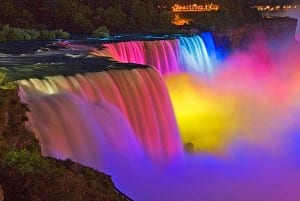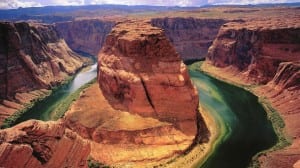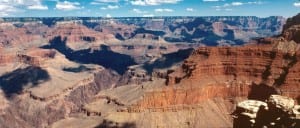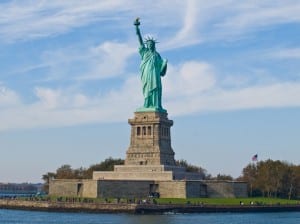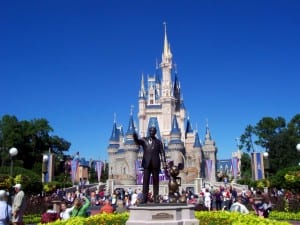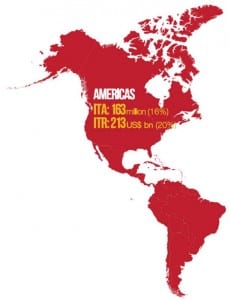There are hundreds upon thousands of tourism resources throughout the Americas, ranging from cultural to natural features as well as man-made attractions. This section will explore these features, focusing upon the main attractions.
Key Natural Resources
Coastal Resources
The Bahamas have hundreds of white beaches with coral reefs on its many islands. The waters are shallow, warm and clear (Burton, 1995) making them ideal for activities such as snorkeling, scuba diving and yachting. Many beaches within the Bahamas have been voted as the ‘best in the world’ with Treasure Cay Beach being one of the top ten (The Islands of the Bahamas, 2014).
Top 10 Beaches
| Number Rating | Beach |
| 1 | Treasure Cay Beach |
| 2 | Great Guana Cay Beach |
| 3 | Tahiti Beach, Elbow Cay |
| 4 | Hope Town Beach |
| 5 | Gilliam Bay Beach, Green Turtle Cay |
| 6 | Bita Bay Beach, Green Turtle Cay |
| 7 | Cherokee Sounds Beach |
| 8 | Sandy Point Beach |
| 9 | Crossing Rock Beach |
| 10 | Casuarina Point Beach |
(The Islands of the Bahamas, 2014)
Treasure Cay Beach is a 3.5 mile stretch of white sand with turquoise waters. Coco Beach Bar and Grill is located 100 yards from the beach and serves Bahamian drink specials and local grilled food (The Islands of the Bahamas, 2014). The average water temperature is 26°C all year round making it perfect for beach activities and water sports.
(YouTube, 2011)
Inland Water Resources
Niagara Falls is one of the most famous tourist destinations within the Americas with around 14 million visitors annually (Lonely Planet, 2014). It consists of three waterfalls; the Horseshoe Falls, American Falls and Bridal Veil Falls and lies on the border between the USA and Canada. Niagara Falls is certainly not the tallest waterfall in the world but it is unbeatable in terms of volume; more than 1 million bathtubs of water plummet over the edge every second (Lonely Planet, 2014). It is a great destination for couples and families as well as a popular attraction for honeymooners. Not only is Niagara Falls a set of waterfalls, it also has many other attractions such as world-class hotels and restaurants, good nightlife, golf courses and spas (Niagara Falls Tourism, 2014).
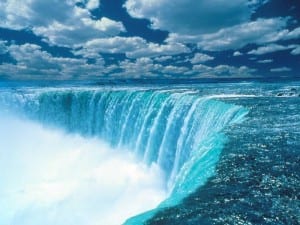
(Google Images, 2014)
(Google Images, 2014)
Wilderness Resources
National Parks are the most popular wilderness resource in the Americas, with the most famous being the Grand Canyon. Situated in Arizona, it embraces canyons and river tributaries and has been a UNESCO World Heritage Site since 1979. 5 million people visit the Grand Canyon every year to admire the views but other activities are available (National Park Foundation, 2014). These include walking/hiking along the Rim Trail or along the historic Hermit Road, renting bikes or going on mule trips as well as many others.
(Google Images, 2014)
(Google Images, 2014)
Key Cultural Resources
Heritage Resources
The Statue of Liberty in New York is perhaps one of the greatest icons of American history. It was given to the USA by the people of France as a gift and to this day is recognised as a symbol of freedom and democracy (National Park Service, 2014). A visit to the statue is a must do activity to the majority of international visitors to the city of New York. Thousands of people visit the monument daily to partake in ranger-guided tours to the pedestal’s observation platform to view the statue on the inside (Discover America, 2014). Even if people do not wish to visit the statue itself, it is still visible from lower Manhattan.
(Google Images, 2014)
Events/Festivals
Many Caribbean islands boast a wealth of colonial heritage and vibrant culture. One way of expressing their culture is through carnivals such as Reggae Sunsplash in Jamaica, Junkanoo in the Bahamas and Cropover in Barbados (Boniface & Cooper, 2012). These festivals are a great way to express national identity and give tourists the opportunity to interact with the locals. Junkanoo is a street parade on the 26th December throughout the Bahamas that has taken place for well over 500 years. In the early hours of the morning, the Junkanoo parade moves throughout Nassau with dancers, music and people playing drums, horns and whistles (The Island of the Bahamas, 2014). The carnival provides entertainment for thousands of people and brings together the local community.
(YouTube, 2010)
Modern Popular Resources
Theme parks are one of the best-known visitor attractions in the region of the Americas and make up a large sector of the tourism industry. They account for over 330 million visitors per year and provide the region with half a million jobs (Boniface & Cooper, 2012). Walt Disney World Resort is situated in Orlando, Florida. The resort was established in the 1970s and to this day continues to grow year after year. It consists of four Disney theme parks, two water parks, six golf courses as well as an entertainment complex suitable for shopping and dining. The total amount of visitors to the four theme parks is more than 700 million guests (WDW Magic, 2009). This tourist attraction is particularly popular amongst families and many travel from overseas just to visit the resort.
(Google Images, 2014)
(Google Images, 2014)
